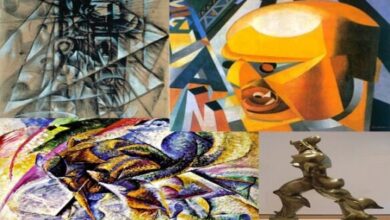What is Audiovisual Media and Types of direct visual aids
Audiovisual Media
Audiovisual Media is a set of visual and auditory techniques that support teaching, facilitating greater and faster understanding and interpretation of ideas. The efficiency of audiovisual media in teaching is based on perception through the senses. According to the way they are used, they can be considered direct projection supports.
Likewise, direct audiovisual media includes all media that can be used in demonstrations directly, and are among others: the magnetic board, the flannelgraph , the overhead projector and the flipchart .
We call teaching materials those specific means or resources that assist the work of instruction and serve to facilitate the understanding of concepts during the teaching-learning process.
What do these allow?
- Present the topics or concepts of a topic in an human language. The objective, clear and accessible way.
- Provide the learner with varied learning media.
- They stimulate the interest and motivation of the group.
- They bring participants closer to reality and give meaning to what they have learned.
- They allow communicate effectively with others helps us to form bonds, to coexist and work as a team. Simply put, communication to be facilitated. They complement teaching techniques and save time.
Types of teaching materials
- Instructor materials.
- Materials for the participant.
Instructional supports
They are the resources that the instructor uses to present a topic and that support or illustrate its presentation. Your requirements are:
- That has a defined purpose.
- May it really serve to support this purpose.
Types of direct visual aids
Chalkboard
The blackboard is a traditional teaching aid. The instructor can write drawings, questions, synthesis, graphs and all those lines or figures that he wants to represent.
Advantages: It is low cost, as it does not require a large investment for its acquisition or its complementary materials. It is easy to use.
Limitations: The blackboard has some limitations, such as limited visual power. It is very important to keep in mind that:
- The bottom edge should be at eye level of the participants.
- It should not have glare that reflects and obstructs visibility.
- It must be located at a distance of no less than twice its height, in relation to the nearest student.
- Obtain all the necessary materials for its use (chalk, eraser and ruler).
- Check that there is good visibility.
- The instructor must be sure that what he writes is visible to the entire group.
- Keep clean: annotated phrases or concepts that are not related to the topic discussed will present an image of disorder and lack of preparation.
- Write clear and short sentences.
- Draw and write legibly. It must always be written in print. The print must be large enough for all participants to read from their seats (2 inches).
To write letters: black, purple, navy and light blue, brown (use three at the same time, but well combined); black-purple, purple-light blue, brown-purple.
To underline: red, yellow, light blue (the latter as long as it has not been used in the letters.
Flipcharts
The flipchart is a surface of sufficient size so that what is written down on it can be read by the entire group. Generally, it is a type of portable easel, into which large sheets of paper or sheets are inserted in succession.
Advantages: Its use represents low cost. If necessary, it allows you to return the slides to analyze them again. When using the flipchart with previously prepared sheets, these must be prepared and arranged carefully. Each of them must carry the message precisely, highlighting the key points. When a sheet does not adapt to the idea it seeks to express, it must be eliminated.
The use of flipcharts with blank sheets is very common when seeking group participation, since the comments that arise will be noted down to reach a conclusion.
Acetates
Acetate is a resource frequently used in the presentation of information in courses, events or activities related to negotiation.
It is advisable to follow the following instructions when preparing acetates:
- Don’t overuse them, as using too many will tire your audience. If you handle information and statistics, it is advisable to use graphs. You should place a maximum of 8 lines.
- The information must be presented in summarized form. For its preparation it is advisable to keep a safety margin of 3 cm.
- The acetate is a support and should not be read in its entirety, but rather must be explained by the exhibitor.
- When you have finished explaining the acetate, turn off the overhead projector.
- It must be prepared vertically, since overhead projectors cannot always capture a horizontal image.
- In the color scheme, use strong colors (black, purple, red) for the lettering. Colors like green, orange and red are for emphasis. The size of the letters must be 1.0 to 1.5 cm made exclusively in print.


